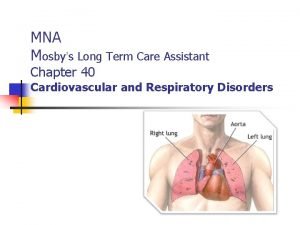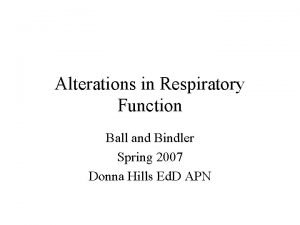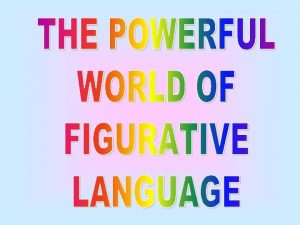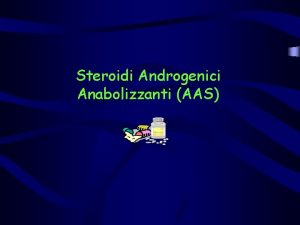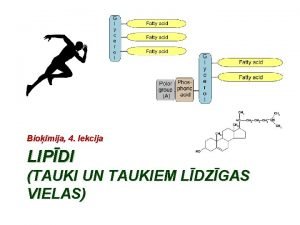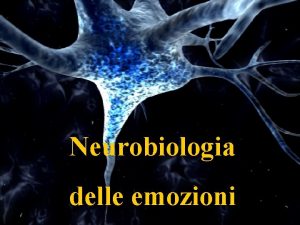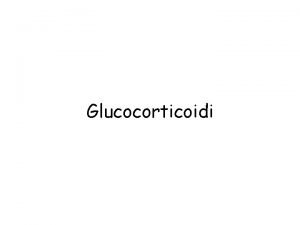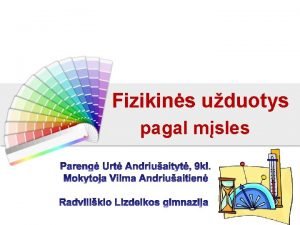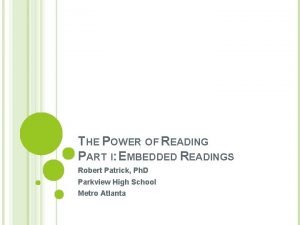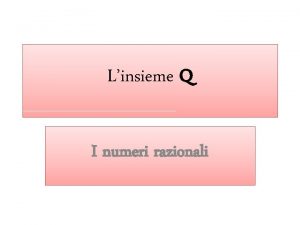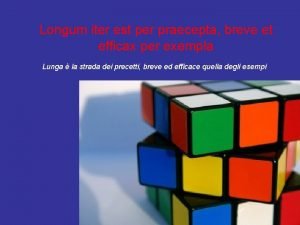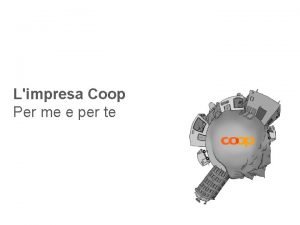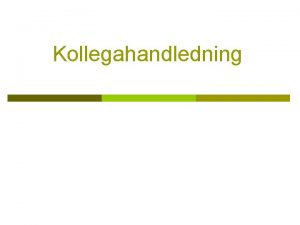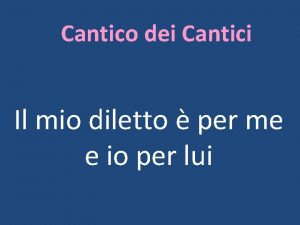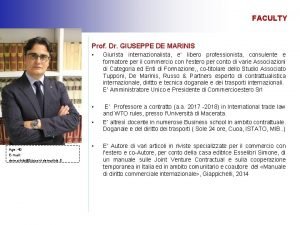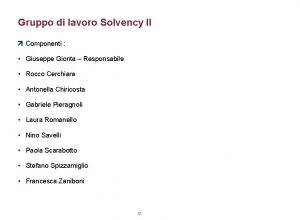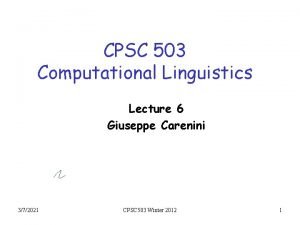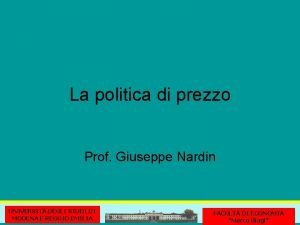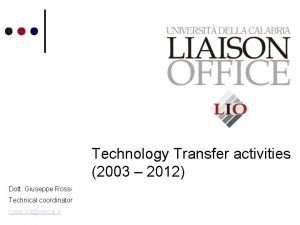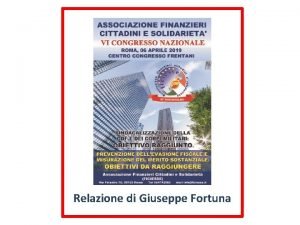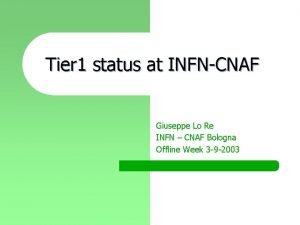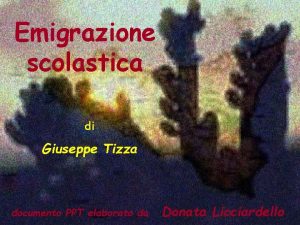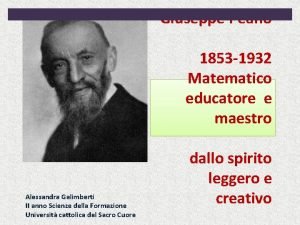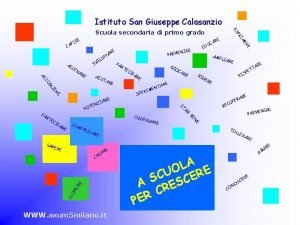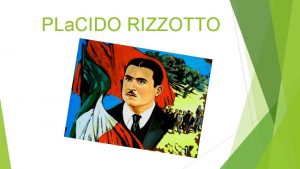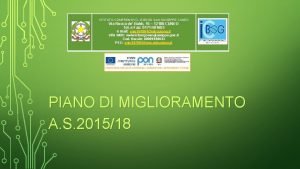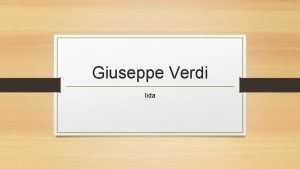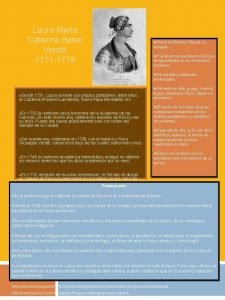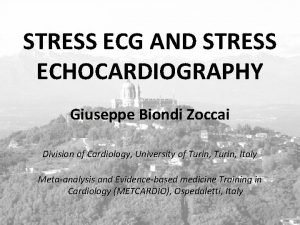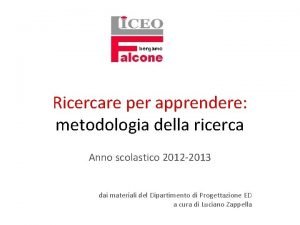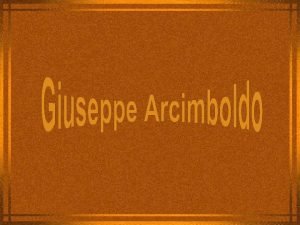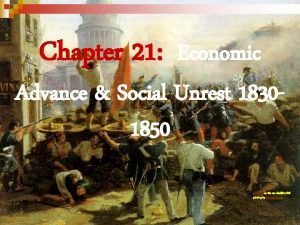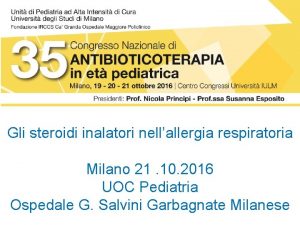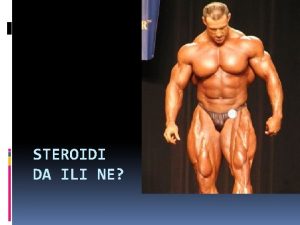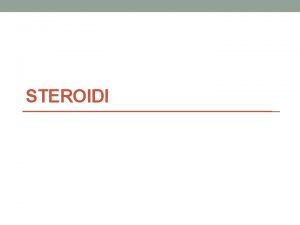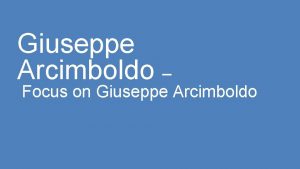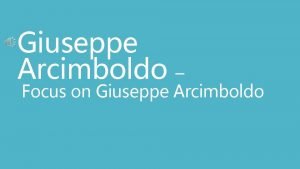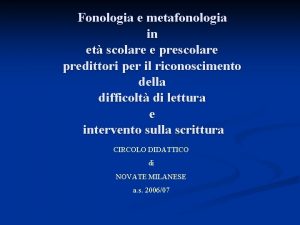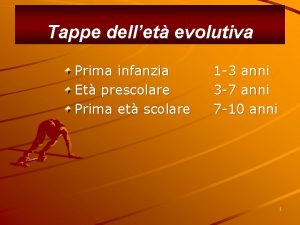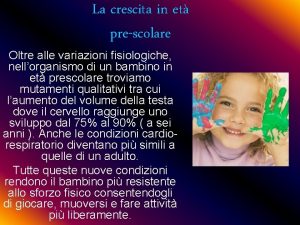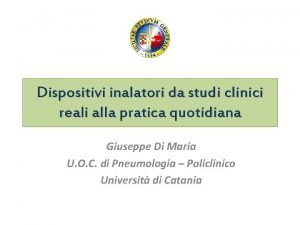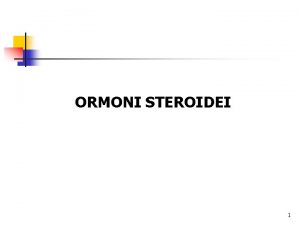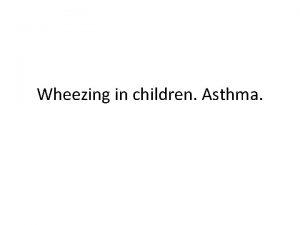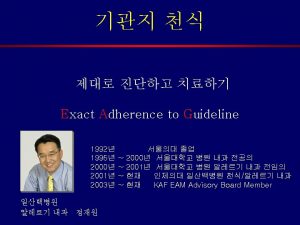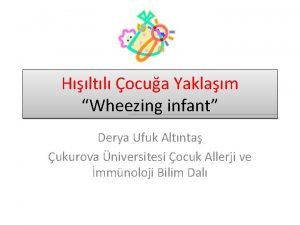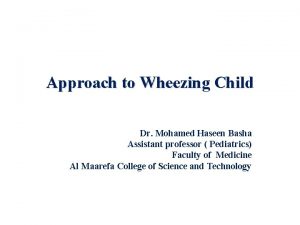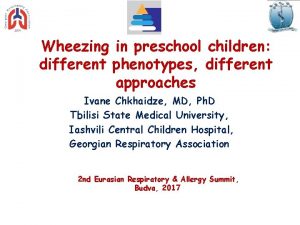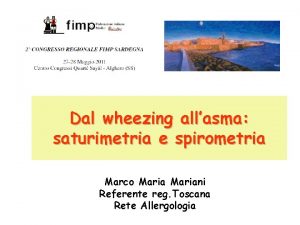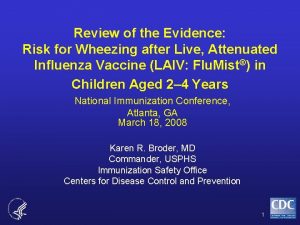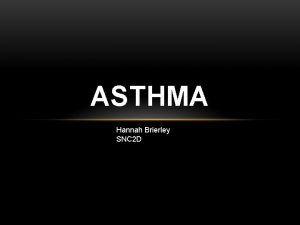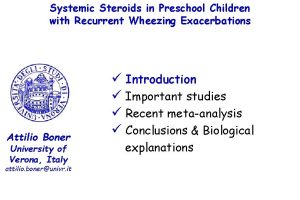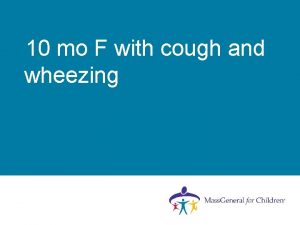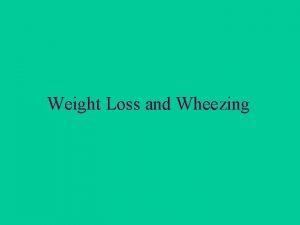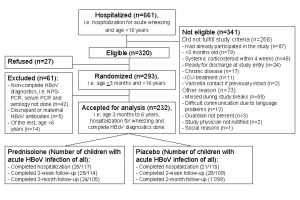Wheezing prescolare steroidi per os vs inalatori Giuseppe








![Oltre i fenotipi (ERS 2014) • “[. . ] the consensus group acknowledges that Oltre i fenotipi (ERS 2014) • “[. . ] the consensus group acknowledges that](https://slidetodoc.com/presentation_image_h/220c2ec5d5fa2bfe581fec8f038ad2a3/image-9.jpg)

































- Slides: 42

Wheezing prescolare: steroidi per os vs inalatori Giuseppe Pingitore Allergologia “G. B. Grassi”, Roma

Problema rilevante per il pediatra Bambini che presentano almeno un episodio di respiro sibilante: • 1/3 nei primi 3 anni di vita • 1/2 entro i 6 anni Martinez FD et al. Asthma and wheezing in the first six years of life. N Engl J Med 1995; 332: 133 -138. Bisgaard H, et al. Prevalence of asthma-like symptoms in young children. Pediatr Pulmonol 2007; 42: 723 -728.

Problema rilevante per il pediatra • Respiro sibilante post-virale (soprattutto) • Asma (>50% inizia prima dei 6 anni) Simpson CR, et al. Trends in epidemiology of asthma in England: a national study of 333, 294 patients. J R Soc Med 2010; 103: 98 -106.

Problema rilevante per il pediatra • Come si fa ad identificare quelli affetti da asma? • Il respiro sibilante è sempre dovuto a broncospasmo ricorrente? NO è asmatico?

Fenotipi basati sul criterio temporale 1246 neonati seguiti fino ai 3 anni e ai 6 anni di vita (826) Nel 1° anno di vita Ig. E cordone (750) PFT a < 6 m (125) Ig. E seriche 9 m (672) A 1 anno di vita 14% Questionario (800) Primi 3 anni follow-up per patologia basse vie aeree (888) 15% 51% A 6 anni di vita questionario sul wheezing (1024) A 6 anni di vita 20% Ig. E seriche (460) PFT (526) Skin Tests (629) Martinez FD et al. Asthma and Wheezing in the First Six Years of Life. N Engl J Med. 1995; 332: 133 -8

Fenotipi basati sul pattern dei sintomi Abbandonato il termine «asma» Brand PLP et al. Definition, assessment and treatment of wheezing disorders in preschool children: an evidence-based approach. Eur Respir J 2008; 32: 1096– 1110

I fenotipi cambiano nel tempo Phenotype remained the same 45. 9% Phenotype altered 54. 1% Schultz A et al. The transient value of classifying preschool wheeze into episodic viral wheeze and multiple trigger wheeze. Acta Paediatrica 2010; 99: 56– 60

Critiche al sistema dei fenotipi • le manifestazioni cliniche possono essere molto variabili nel tempo per il singolo bambino • in molti casi, si possono presentare sovrapposizioni di caratteristiche comuni ai due gruppi • Approccio fenotipico poco utile nella pratica clinica (sovrastima o sottostima dei sintomi) Schultz A et al. Danger of using an unreliable classification system for preschool wheeze. ERJ 2009; 33(4): 944 Saglani S, Bush A. Asthma in preschool children: the next challenge. Curr Opin Allergy Clin Immunol. 2009 Apr; 9(2): 141 -5
![Oltre i fenotipi ERS 2014 the consensus group acknowledges that Oltre i fenotipi (ERS 2014) • “[. . ] the consensus group acknowledges that](https://slidetodoc.com/presentation_image_h/220c2ec5d5fa2bfe581fec8f038ad2a3/image-9.jpg)
Oltre i fenotipi (ERS 2014) • “[. . ] the consensus group acknowledges that wheeze patterns in young children vary over time and with treatment, rendering the distinction between episodic viral wheeze and multiple-trigger wheeze unclear in many patients. Inhaled corticosteroids remain first-line treatment for multipletrigger wheeze, but may also be considered in patients with episodic viral wheeze with frequent or severe episodes, or when the clinician suspects that interval symptoms are being under reported. ” Brand PLP et al. Classification and pharmacological treatment of preschool wheezing: changes since 2008. Eur Respir J 2014; 43: 1172– 1177

Oltre i fenotipi (ERS 2014) Brand PLP et al. Classification and pharmacological treatment of preschool wheezing: changes since 2008. Eur Respir J 2014; 43: 1172– 1177

CSI o montelukast • Multicenter, randomized, placebo-controlled, double -blind, double-dummy trial • N. 63 children aged 2– 6 years with asthma-like symptoms were randomly allocated to receive FP (25), Mk (18) or placebo (20) for 3 months. • A significant reduction in circulating eosinophils was found in the Mk group only (p=0. 008) Kooi EMW et al. Fluticasone or montelukast for preschool children with asthma-like symptoms: Randomized controlled trial. Pulmonary Pharmacology & Therapeutics 21 (2008) 798– 804

GINA 2014: asma sotto i 5 anni Diagnosi difficile per frequenza sintomi e limiti alla diagnosi strumentale Piacentini G, Pneumol Ped 2014 (9) Global Initiative for Asthma. Global Strategy for Asthma Management and Prevention 2014. www. ginasthma. org

GINA 2014: asma sotto i 5 anni Piacentini G, Pneumol Ped 2014 (9) Global Initiative for Asthma. Global Strategy for Asthma Management and Prevention 2014. www. ginasthma. org

GINA 2014: asma sotto i 5 anni Therapeutic trial • “A trial of treatment for at least 2– 3 months with as-needed short-acting beta 2 -agonist (SABA) and regular low dose inhaled corticosteroids (ICS) may provide some guidance about the diagnosis of asthma (Evidence D). Marked clinical improvement during treatment, and deterioration when treatment is stopped, support a diagnosis of asthma. ” • Alternative causes of recurrent wheezing must be considered and excluded Global Initiative for Asthma. Global Strategy for Asthma Management and Prevention 2014. www. ginasthma. org

Scelta della terapia • Scopo del trattamento: § raggiungere il controllo dei sintomi § ridurre il rischio futuro • Variabili da considerare: § Farmaco da preferire (caratteristiche paziente) § Trattamento regolare o intermittente § Tecnica di somministrazione

Castro-Rodriguez, 2009 Castro-Rodriguez JA et al. Efficacy of Inhaled Corticosteroids in Infants and Preschoolers With Recurrent Wheezing and Asthma: A Systematic Review With Meta-analysis. Pediatrics 2009; 123: e 519–e 525

Castro-Rodriguez, 2009 % vs Meno esacerbazioni (18 32, 1%) Analisi post-hoc: età, Effetto indipendente da oide, stato atopico, tipo di ster studio dispositivo, qualità dello e durata. Castro-Rodriguez JA et al. Efficacy of Inhaled Corticosteroids in Infants and Preschoolers With Recurrent Wheezing and Asthma: A Systematic Review With Meta-analysis. Pediatrics 2009; 123: e 519–e 525

ERS 2014 – GINA 2014 • propongono un trattamento giornaliero con ICS a basso dosaggio nei bambini con frequenti episodi di broncospasmo su base virale, accanto all’indicazione, fino a ieri prevalente, di un trattamento con montelukast.

Corticosteroidi inalatori < 5 anni Corticosteroidi inalatori Bassa dose giornaliera (mcg) Beclometasone dipropionato (HFA) 100 Budesonide (p. MDI + spacer) 200 Budesonide (nebulizzatore) 500 Fluticasone propionato (HFA) 100 Ciclesonide 160 Mometasone furoato Triamcinolone acetonide Non studiato nei bambini con < 4 anni Non studiato in questo gruppo Global Initiative for Asthma. Global Strategy for Asthma Management and Prevention 2014. www. ginasthma. org

GINA 2014 Valutare anche: • Modalità di somministrazione • Preferenze dei genitori • Risposta al trattamento

Device inalatorio < 5 anni Età Device di prima scelta Device alternativo 0– 3 anni Inalatore predosato pressurizzato più spacer associato a maschera facciale Nebulizzatore con maschera facciale Inalatore predosato pressurizzato più spacer associate a boccaglio Inalatore predosato pressurizzato più spacer associate a maschera facciale o nebulizzatore con boccaglio o maschera facciale 4– 5 anni Global Initiative for Asthma. Global Strategy for Asthma Management and Prevention 2014. www. ginasthma. org

I dispositivi più usati Utilizzo percentuale dello spacer e del nebulizzatore 90 80 70 60 50 MDI + spacer 40 nebulizzatore 30 20 10 0 USA Nord Europa Sud Europa Bisgaard H et al. Prevalence of Asthma-Like Symptoms in Young Children. Pediatric Pulmonology 42: 723– 728 (2007)

La terapia continua con CSI Guilbert T et al. Long-Term Inhaled Corticosteroids in Preschool Children at High Risk for Asthma. N Engl J Med 2006; 354: 1985 -97

Nuove strategie: terapia intermittente • Intervento terapeutico precoce da iniziare ai primi sintomi d’infezione respiratoria e proseguire per 7 -10 giorni

Terapia intermittente con CSI • 238 bb con wheezing moderato-severo (età 12 -59 mesi) • Trattati ai primi sintomi di raffreddore per 7 gg con – Budesonide 1000 mcg x 2 – Montelukast 4 mg/die – Placebo • In aggiunta ad albuterolo • Durata trial: 12 mesi • Outcome: giorni liberi da wheezing (EFD) p=0, 003 Bacharier LB et al. Episodic use of an inhaled corticosteroid or leukotriene receptor antagonist in preschool children with moderate-to-severe intermittent wheezing J Allergy Clin Immunol 2008; 122: 1127 -35

Terapia intermittente con CSI • 238 bb con wheezing moderato-severo (età 12 -59 mesi) • Trattati ai primi sintomi di raffreddore per 7 gg con – Budesonide 1000 mcg x 2 – Montelukast 4 mg/die – Placebo • In aggiunta ad albuterolo • Durata trial: 12 mesi • Outcome: giorni liberi da wheezing (EFD) p=0, 003 Bacharier LB et al. Episodic use of an inhaled corticosteroid or leukotriene receptor antagonist in preschool children with moderate-to-severe intermittent wheezing J Allergy Clin Immunol 2008; 122: 1127 -35

Terapia intermittente con CSI • 129 bb (1 -6 aa) trattati ai primi segni di URI per max. 10 gg con: Consumo % di cortisone per os – Fluticasone 750 mcg x 2 – Placebo • Durata trial: 40 sett • Outcome: uso cortisone x os Lieve rallentamento della crescita nel gruppo trattato Ducharme FM et al. Preemptive Use of High-Dose Fluticasone for Virus-Induced Wheezing in Young Children. N Engl J Med 2009; 360: 339 -53.

Terapia intermittente con CSI 276 bambini (1– 4 aa) con wheeze ricorrente trattati x tre mesi: • 400 g Beclometasone bid + 2500 g salbutamolo prn • placebo bid + 800 g Beclometasone/1600 g salbutamolo prn • placebo bid + 2500 g salbutamolo prn Outcome: giorni senza sintomi Conclusions: Regular inhaled glucocorticoid is the most effective treatment for frequent wheezing in preschool children. However, prn bronchodilator/glucocorticoid combination might be an alternative option. Effetto indipendente dai fattori di rischio Papi A et al. Regular vs prn nebulized treatment in wheeze preschool children. Allergy 2009: 64: 1463– 1471

Terapia intermittente con CSI • 278 bb (12 -53 mm) con wheeze ricorrente (m. API+) trattati: – Budesonide 500 mcg/day per 1 anno – Budesonide 1000 mcg x 2 x 7 gg ai primi segni di URI • Outcome: frequenza riacutizzazioni richiedenti steroide x os Conclusions A daily low-dose regimen of budesonide was not superior to an intermittent highdose regimen in reducing asthma exacerbations. Daily administration led to greater exposure to the drug at 1 year. Zeiger RS et al. Daily or Intermittent Budesonide in Preschool Children with Recurrent Wheezing. N Engl J Med 2011; 365: 19902001

CSI daily vs intermittent Ducharme FM et al. Diagnosis, management, and prognosis of preschool wheeze. Lancet 2014; 383: 1593– 604

CSI daily vs intermittent Ducharme FM et al. Diagnosis, management, and prognosis of preschool wheeze. Lancet 2014; 383: 1593– 604

CSI daily vs intermittent • la terapia intermittente con ICS ad alte dosi è risultata efficace nei bambini con wheezing indotto da infezioni virali che sono asintomatici fra le riacutizzazioni, mentre la terapia giornaliera con ICS sembra essere la più efficace per i bambini con wheezing ricorrente che presentano sintomi fra gli episodi acuti o atopia. Ducharme FM et al. Diagnosis, management, and prognosis of preschool wheeze. Lancet 2014; 383: 1593– 604

Dosaggi CSI Corticosteroidi inalatori Dose giornaliera totale(mcg) Bassa Media Alta Beclometasone dipropionato (CFC) 200– 500 >500– 1000 >1000 Beclometasone dipropionato (HFA) 100– 200 >200– 400 >400 Budesonide (DPI) 200– 400 >400– 800 >800 Ciclesonide (HFA) 80– 160 >160– 320 >320 Fluticasone propionato (DPI or HFA) 100– 250 >250– 500 >500 Mometasone furoato 110– 220 >220– 440 >440 Triamcinolone acetonide 400– 1000 >1000– 2000 >2000 GINA, 2014

Funzione respiratoria “Findings from several cohort studies have shown that preschool children with wheeze have deficits in lung function at 6 years of age that persisted until early and middle adulthood, suggesting increased susceptibility in the first years of life that might lead to persistent sequelae. ” Ducharme FM et al. Diagnosis, management, and prognosis of preschool wheeze. Lancet 2014; 383: 1593– 604

GINA 2016

BTS-SIGN 2014

CSO: la meta-analisi (1986 -2015) • Eleven studies met inclusion criteria (n. 1733); four were conducted on an outpatient basis, five in inpatients, and two in the ED • Primary outcomes were hospitalizations, unscheduled emergency department (ED) visits in following month, need of additional OCS courses, and length of stay (ED or hospital). Castro-Rodriguez JA et al. Efficacy of Oral Corticosteroids in the Treatment of Acute Wheezing Episodes in Asthmatic Preschoolers: Systematic Review With Meta-Analysis. Pediatr Pulmonol. 5 Mar 2016

CSO: la meta-analisi (1986 -2015) Castro-Rodriguez JA et al. Efficacy of Oral Corticosteroids in the Treatment of Acute Wheezing Episodes in Asthmatic Preschoolers: Systematic Review With Meta-Analysis. Pediatr Pulmonol. 5 Mar 2016

CSO: la meta-analisi (1986 -2015) Castro-Rodriguez JA et al. Efficacy of Oral Corticosteroids in the Treatment of Acute Wheezing Episodes in Asthmatic Preschoolers: Systematic Review With Meta-Analysis. . Pediatr Pulmonol. 5 Mar 2016

CSO: la meta-analisi (1986 -2015) Setting: Dipartimenti di Emergenza e ricoveri in ospedale Among the inpatient studies, children who received OCS needed fewer additional OCS courses than those on placebo (RR: 0. 57) Conclusions: Treatment with OCS in the ED or hospital may be beneficial in toddlers and preschoolers with frequent asthma/wheezing exacerbations. Castro-Rodriguez JA et al. Efficacy of Oral Corticosteroids in the Treatment of Acute Wheezing Episodes in Asthmatic Preschoolers: Systematic Review With Meta-Analysis. . Pediatr Pulmonol. 5 Mar 2016

Approccio pratico al bambino prescolare con wheezing episodico associato a infezioni virali • Accurata anamnesi (atopia, fattori ambientali, gravità e numero delle crisi, etc. ) • Se wheezing episodico, associato ad infezioni: § steroidi per os solo se crisi grave § salbutamolo per via inalatoria possibile associazione con Beclometasone (800 mcg) § Se sintomi gravi e/o frequenti: prevenzione con montelukast (non atopico), steroidi a basso dosaggio per via inalatoria (atopia e familiarità) o tutti e due insieme e poi step down R. Cutrera, 2014

 Cardiovascular disorders
Cardiovascular disorders The bowling ball in the following figure is wheezing
The bowling ball in the following figure is wheezing Personification examples
Personification examples Aas steroidi
Aas steroidi Tauku pārziepošana
Tauku pārziepošana Paleopallio
Paleopallio Tabella cortisonici
Tabella cortisonici 1.800 dam/jam = hm/menit
1.800 dam/jam = hm/menit Catullus 84
Catullus 84 Auksu mesta sidabru austa
Auksu mesta sidabru austa Multas per gentes et multa per aequora vectus
Multas per gentes et multa per aequora vectus Per stirpes v per capita
Per stirpes v per capita Approssimazione per difetto e per eccesso
Approssimazione per difetto e per eccesso 27 miles per gallon into kilometers per liter
27 miles per gallon into kilometers per liter Longum iter est
Longum iter est Coop per me e per te
Coop per me e per te An hour is 60 minutes
An hour is 60 minutes Per capita vs per stirpes
Per capita vs per stirpes Cantico dei cantici il mio diletto
Cantico dei cantici il mio diletto Giuseppe de marinis
Giuseppe de marinis Giuseppe della ricca
Giuseppe della ricca Giuseppe gionta
Giuseppe gionta Giuseppe carenini
Giuseppe carenini Giuseppe nardin
Giuseppe nardin Giuseppe rossi unical
Giuseppe rossi unical Giuseppe fortuna
Giuseppe fortuna Giuseppe lo re
Giuseppe lo re Giuseppe tizza
Giuseppe tizza Giuseppe grande matematico del 700
Giuseppe grande matematico del 700 Istituto comprensivo san giuseppe calasanzio
Istituto comprensivo san giuseppe calasanzio Giuseppe valitutti
Giuseppe valitutti Marco falasca
Marco falasca Scuola san giuseppe foggia
Scuola san giuseppe foggia Giuseppe letizia la mafia uccide solo d'estate
Giuseppe letizia la mafia uccide solo d'estate Istituto comprensivo borgo san giuseppe cuneo
Istituto comprensivo borgo san giuseppe cuneo Giuseppe verdi sävellykset
Giuseppe verdi sävellykset Giuseppe veratti
Giuseppe veratti Duke score
Duke score Ungaretti mappa concettuale
Ungaretti mappa concettuale Arcimboldo el asado
Arcimboldo el asado Economic advance and social unrest
Economic advance and social unrest Giuseppe cacciapuoti
Giuseppe cacciapuoti Giuseppe valitutti
Giuseppe valitutti
